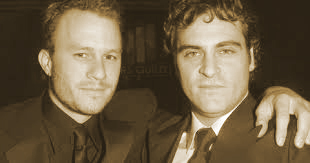To contextualise this series about psychiatry, see: here. Below, an abridged translation of a chapter of one of the books that I wrote at the beginning of the century:
After the parody of the previous pagesI recover my original voice.
If you are a victim of abusive parents, the ideal is that you run away before they harm you.
If you stay in your parents’ home and they want to take you to the therapist, you blunder by believing he’ll be your ally. If you need someone to talk to, do it with a friend of your entire confidence. Don’t go with someone who makes his living from what abusive parents pay him, not even to one session. Remember that society gives the therapist powers to slander you with a psych label.
In case you have already gone with a therapist never, ever take any ‘medicine’ he gives you. These legal drugs are more toxic than the illegal ones that are being sold on the street. Having a real confident outside the mental health profession is the best option.
Alas, sometimes there is no one to trust or who is willing to listen. The family is such a monolithic institution that there are many taboos to question it, and the psychiatric profession has deceived many people.
In some cities there are places for people in distress where you can get some shelter. When I lived in England, part of the college course on mental health consisted of visiting Drop-in centres. I realised that only a few of those who took shelter there were genuinely disturbed; the majority were unemployed people in Manchester. It was refreshing to see that in those centres there were no psychiatrists or other professionals, not even social workers. No one who sided society or the family directed these centres. They even offered me to work if I volunteered. It’s not a bad idea that you go to one of these shelters for people in distress.
If the city where you live lacks a Drop-in shelter, or if there are no jobs to flee from your abusive parents, or if you are suffering from a panic attack, go to the nearest library and see if they have books by Alice Miller (child abuse) or Robert Whitaker (the most readable critic of psychiatry). If not, ask for any of these books:
Thomas Szasz, Anti-Freud: Karl Kraus’s criticism of psychoanalysis and psychiatry (NY: Syracuse University Press, 1990).
The critique of language is the most radical of all critiques. This is the number one book in my list because if we don’t uproot from our vocabulary the Newspeak of psychiatrists, psychoanalysts and clinical psychologists it will be impossible to understand the victims of the family. The millenarian humanities history, biography and especially autobiography after Modrow (see below) are more than enough to understand the human mind. The new and aggressive psychiatric and psychoanalytic ideologies, and especially their language, only mystify our self-understanding.
Karl Kraus, who lived in Freud’s Vienna, was a man of good heart who perceived the dangers that the Newspeak of psychiatry and psychoanalysis represented for the underprivileged of his native city. Kraus tried to debunk it in the strongest terms in his periodical, but his admonitions fell in deaf ears:
Yes, our pitiable state is partly caused by stupidity […]. Profound stupidity carries deep conviction and cannot be bought off for any price. The greatest public menace, therefore, is the incorruptible psychiatric expert […]. The very unselfishness with which such psychiatric outrages are perpetrated suggests that they spring from pathological imbecility rather than from any other source. If only such idiocies were not destined, in each and every case, to destroy a life! (p. 135).
I would recommend reading Anti-Freud together with the appendix of 1984where Orwell resumes ‘The principles of Newspeak’.
John Modrow, How to become a schizophrenic: the case against biological psychiatry(Seattle: Apollyon Press, second edition, 1996).
In spite of the fact that Modrow uses a psychiatric label on the very title, on the first page he writes mockingly:
Actually I have about much belief in the reality of ‘schizophrenia’ as I have in the reality of witchcraft or demonic possession.
This book consists of two parts: an autobiographical recount of the author’s experiences about how he lost his mind when he was young due to parental abuse, and a scientific debunking of psychiatry.
The value of Modrow’s book lies in that compared to, say, a brilliant essay by Ronald Laing about madness, Modrow explains how he lost his mind from his own subjective experience. Given the unique value autobiography has in the true study of the human psyche, Modrow’s study must be considered a paradigm to understand the victims disturbed by an all-out assault at home. Robert Baker, a professor of psychology that I met in 1994, has said that Modrow ‘is, perhaps, the unrecognized and unappreciated world’s foremost authority on this disorder [schizophrenia]’. [1]
Jeffrey Masson, Against therapy: emotional tyranny and the myth of psychological healing (London: HarperCollins Publishers, 1997).
——————, Final analysis: the making and unmaking of a psychoanalyst (London: HarperCollins, 1991).
Everyone should know, then, that to step into an office of a psychotherapist, regardless of the latter’s persuasion, is to enter a world where great harm is possible (Against Therapy, p. 298).
The most difficult thing for a fish is to do a critique of the water.
Let’s imagine a fish in a factory-polluted waters. The only way this animal may realise that the pollution is poisoning it is to see the factory from a POV outside of the lagoon. But his aquaculture prevents it from doing so.
We are living 120 years after the first case of psychotherapy, Freud with Dora. Nowadays psychotherapy is a multibillion-dollar quack profession accepted and respected by society. Many of Freud’s ideas are now part of our culture’s folklore: repressed memories, sexual sublimation, phallic symbols, castration anxiety and more—the ‘water’ we breathe every day in our lagoon. Following the metaphor, Szasz and Masson are the amphibians that evolved, came out from the lagoon and saw the polluting factory from a privileged viewpoint.
Masson, a great fan of psychoanalysis in the past, defrocked himself from the profession because he didn’t want to play the role of an agent of the family, but of the family’s victims. He convinced me that the diverse schools of psychoanalysis and psychotherapy have not broken away from psychiatry. It’s very telling, Masson says, that no psychotherapist dares to denounce electroshock in the media. Those who still believe that psychotherapy (including psychoanalysis) and psychiatry are essentially different things would benefit from reading these books by Masson.
Many people have not realised yet that Freud was a writer of fiction. It’s incredible that Freud’s literary fiction has bamboozled so many intellectuals and sophisticated people. Someone said hyperbolically that the criminal of criminals is the philosopher. This sentence may be imputed not only on Marx but on Freud as well: the damage their followers did to the 20th century has not been fully appreciated yet.
After reading the Afterword to the second edition of Against Therapy I felt very pleased to see that Masson concludes his book advising his readers that instead of childishly searching for ‘therapy’ in a paternal figure they write their autobiographies.
Alvin Pam, ‘Biological psychiatry: science or pseudoscience?’ in Colin Ross and Alvin Pam Pseudoscience in biological psychiatry: blaming the body (NY: Wiley & Sons, 1995), pp. 7-84.
The most difficult thing for a fish is to do a critique of the water. But the most difficult thing of all, even more difficult than to criticise psychotherapy, is to criticize a pseudosciencethat is being taught to medical students.
The psychiatrists of the 19th century had the political genius to perceive that science, and not the humanities, was going to be the paradigm of the 20th century. So they invested their ideology with a scientific robe. But as Alvin Pam says:
What I mean is much more fundamental: biological psychiatry cannot fulfill its mission properly because in its current state it has more the accoutrement of a scientific discipline than the substance. To be sure, this statement will raise skeptical eyebrows. It will be the burden of this chapter to spell out the grounds for such a broad iconoclastic assertion.
A common ‘fish’ frequently listens in his aquaculture that the gene of depression has been discovered; that a physician won the Nobel prize for his investigations on dopamine (that the psychiatrists relate with ‘schizophrenia’); that in his school Ritalin is recommended for kids who suffer from ‘attention deficit disorder’; that studies on twins have demonstrated that ‘mental illnesses’ are hereditary, etc. Since our fish is completely immersed in this water it’s impossible that it becomes aware that the water is contaminated. His critical intelligence has no basis to realise that these affirmations don’t come from scientists but from pseudo-scientists that have self-deceived themselves in order to make a profit.
Pam’s chapter originally appeared in the journal Acta Psychiatrica Scandinavicaand represented the ‘emergence from the water’ for a student of psychiatry who read it and became aware that in her university she had been taught a false science (pp. 241f). Pam’s paper uses the same jargon that biological psychiatrists use and it contains almost two hundred references of specialized literature. It’s ideal for medical doctors and scientists who are interested in a scholarly rebuttal of the claims of psychiatry and its ‘medical model’ of mental disorders.
Peter Breggin, Toxic psychiatry: why therapy, empathy and love must replace the drugs, electroshock, and biochemical theories of the ‘new psychiatry’ (NY: St. Martin’s Press, 1994).
The picture I have drawn looks overwhelming, yet it is not an exaggeration. Psychiatry is a giant industry, protected by a state monopoly and promoted by a psycho-pharmaceutical complex with multi-billion-dollar power (p. 370).
Just as Loren Mosher, Breggin realized that his profession might be based on a theoretical fraud. There is nobody more authoritative to debunk a cult or a pseudoscience than he who devoted decades of his life researching its foundations.
Breggin has fought against the tide in his profession. He sides children re-victimized by his colleagues. He has performed campaigns against the revival of lobotomy, electroshock and the medication of children and the elderly with neuroleptics.
Breggin’s book is a treatise of almost five hundred readable pages for the non-specialist. In the chapters on the alliance of parents with psychiatrists, Breggin denounces psychiatric labels and the drugs that are being prescribed to millions of children and adolescents—yes, millions of them [2]—at the initiative of psychiatrists hired by the parents.
Anyone who has been deceived by the media and believes that depression or even a severe mental disorder is of biological nature, or that it may be treated medically, must read Breggin’s book, especially if he is taking psychiatric drugs.
Breggin’s chapter on electroshock shocks the reader: it shows the truly inquisitorial methods of the psychiatric profession. It’s also shocking the chapter on the alliance of psychiatry with the medical schools in the universities; the insurance and the drug companies; the media, some government institutions and associations of parents: everyone except the ‘patient’ identified by all of them.
Since 1971 Breggin is director of the International Center for the Study of Psychiatry and Psychology. Originally the centre was founded to oppose the revival of lobotomy, and today it opposes the inclination in our culture to diagnose and medicate children and adolescents. Since 1999 the centre publishes a journal critical of bio-reductionist theories. [3]
Thomas Szasz, The manufacture of madness: a comparative study of the Inquisition and the mental health movement (NY: Syracuse University Press, 1997).
During the past two decades I have devoted much work and many words to exposing the scientific stupidity, the philosophical folly, and the moral monstrosity of this official psychiatric posture. [4]
Aristotle said that to obtain a truly profound knowledge about something it’s necessary to know its history. This scholarly treatise showed me what is psychiatry and why psychiatrists do what they have been doing in the last three centuries. In this work Szasz examines the great similarities between the Inquisition and psychiatry, including present-day psychiatry. Without the Inquisition there can be no ‘witches’. Likewise, without the Psychiatric Institution there can be no ‘schizophrenics’. In other words, psychiatrists manufacture madness.
Ignoring this work reminds me of the Russian who was ignorant of The Gulag Archipelagobefore the fall of the Berlin wall. Trying to understand the mental health movement without reading Szasz is like trying to understand Stalin’s Russia without reading Solzhenitsyn.
___________
Notes
[1] Mind games (op. cit.), p. 223.
[2] Your drug may be your problem(op. cit.), p. 16.
[3] Information about the International Center for the Study of Psychiatry and Psychology can be obtained in the website (http://www.icspp.org) or writing to ICSPP, 4628 Chestnut Street, Bethesda, Maryland 20814, USA.
[4] Schizophrenia (op. cit.), p. 44.
______ 卐 ______
Liked it? Take a second to support this site.







